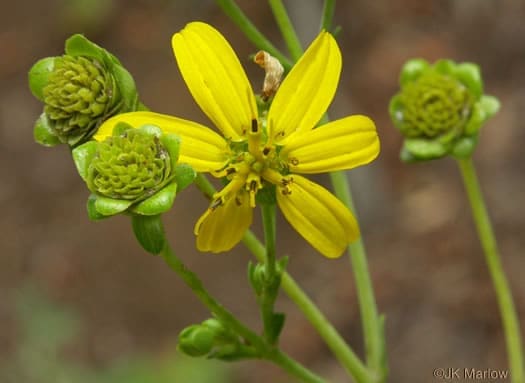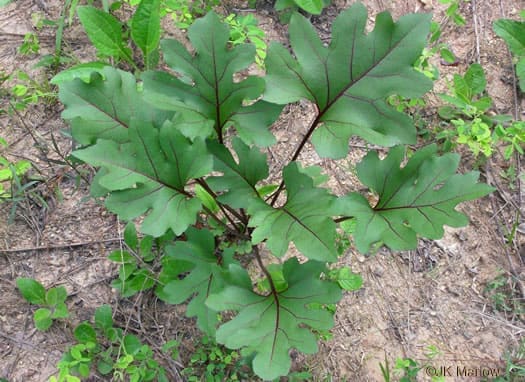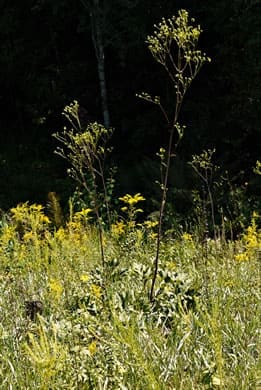Asteraceae
Carolina rosinweed
Silphium compositum
Other Common Names
kidney-leaf rosinweed
Plant Type
Herbaceous Wildflower
Life Cycle
Perennial
Typical Size
2-8 ft. tall
2-4 ft. wide
Tolerant of
Drought
Inolerant of
Poorly Drained Soil
Propagation
By seed
Plant Propagation Notes
Self-seeds readily.
Plant Planting Notes
Develops long taproot that does not easily transplant.
Plants/Diseases
No significant disease or pest issues.
Wildlife Benefits
Nectar/pollen source for pollinating insects, Fruit/seeds for birds
Leaves
Leaves alternate, simple and kidney-shaped with lobes and distinctive red/purple leaf veins.
Flowers
Flowers are heads with 7-20 bright yellow ray flowers.
Fruit
Achene.
Toxicity
No know toxicity.

USDA Hardiness Zones
7, 8, 9
Light Exposure
Full Sun, Part Sun/Shade
Soil Moisture
Medium
Soil Drainage
Well-drained
Soil pH
Acidic (less than 6.0), Neutral (6.0-8.0), Basic (greater than 8.0)
Native in South Carolina?
Yes
Plant Native Habitat
Dry forests, woodlands, road banks, and longleaf pine sandhills.
Global Conservation Status (NatureServe)
Secure (G5)
Federal Conservation Status (USFWS)
Not Listed
Distribution Notes
Common throughout South Carolina.
Subspecies
Silphium compositum var. compositum
Silphium compositum var. ovatifolium
Silphium compositum var. venosum



